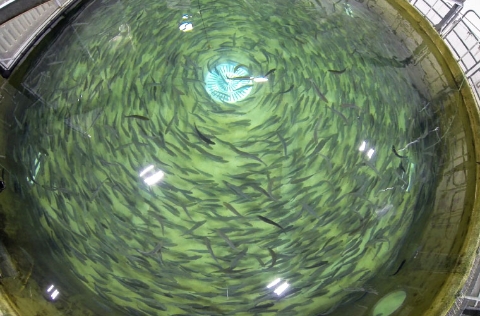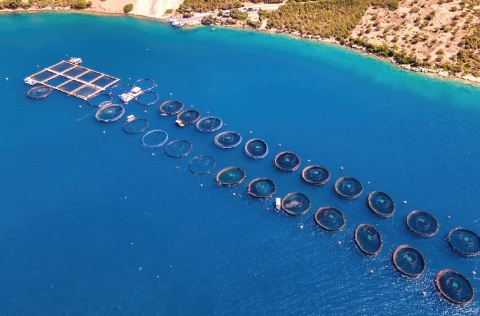
Following the mouse, the zebrafish (Danio rerio) has emerged as one of the most fascinating model organisms in research, benefiting studies into human diseases as well as advancements in aquaculture.
The zebrafish is a well-known freshwater cyprinid species, widely employed as a model organism in research. For over three decades, it has featured prominently in leading laboratories across the globe.
Its small size (3 to 4 centimeters) and relatively simple care requirements are among the traits that have cemented its status as an indispensable tool in many of the world’s top research facilities.
In an interview with misPeces, Christian Lawrence, Associated Director of Research Operations at Boston Children’s Hospital and prolific author on zebrafish husbandy, describes the species as one of the most impactful research organisms in biomedical advances. However, Lawrence notes, there is still much to learn about its biology and potential in aquaculture.
Remarkable traits for laboratory use
Zebrafish exhibit exceptional suitability as a laboratory animal, explains Lawrence, largely due to their prolific nature. A mature female can produce hundreds of embryos each week. These embryos are capable of feeding on live prey just days after hatching. Moreover, zebrafish are transparent for much of their development, allowing for non-invasive observation of organ development and function.
What makes zebrafish truly extraordinary is their capacity to regenerate various organs, including fins, the heart, spinal cord, retina and liver. Perhaps most importantly, they share many genetic similarities with humans. “This provides researchers with opportunities for studies and experiments that are not feasible with other model organisms”, Lawrence adds.
The evolution of zebrafish research
The limited understanding of certain aspects of zebrafish biology can be traced back to the 1970s when the species was first adopted as a genetic model at the University of Oregon.
Lawrence explains that initial research focused heavily on early development and genetic mechanisms of embryonic formation, with less emphasis on breeding, management, or welfare.
Over time, as zebrafish began to be utilised in broader research fields, a deeper understanding of their husbandry became imperative. Legislative oversight has also grown to ensure better management practices for the species.
“In the past four to five years, we’ve been working to expand a scientific understanding of these factors, but there’s still a long way to go,” Lawrence remarks.
Maintaining optimal laboratory conditions

While zebrafish are relatively easy to maintain and breed in laboratory setting, their use for research purposes requires stringent control of environmental conditions. “Every factor that impacts their cultivation – nutrition, water quality, and pathogens – can significantly influence scientific outcomes,” Lawrence points out.
Another important distinction, he stresses, is that “a fish is not a mouse.” There are still numerous variables in zebrafish husbandry that can affect the reproducibility of scientific findings. Until the infrastructure supporting zebrafish research matches the rigour and convenience seen with rodents, researchers must be cautious about drawing parallels between model organisms.
A crucial link between aquaculture and biomedicine
Zebrafish serve as a unique bridge between aquaculture and biomedicine. “The insights gained from using zebrafish in one field can often accelerate progress in the other,” Lawrence explains.
For instance, molecular tools developed in zebrafish to study human health and disease could enhance our understanding of commercially important aquaculture species. Conversely, sophisticated aquaculture techniques can improve zebrafish husbandry, making them even more effective as a biomedical research tool.
“There are many examples of this cross-disciplinary exchange, and I believe there’s great potential for more, which is incredibly exciting,” he concludes.
The Basics of Zebrafish Husbandry
 Christian Lawrence is the author of a comprehensive scientific review, The Husbandry of Zebrafish, Danio rerio: A Review, published in the journal Aquaculture. In this paper, he outlines the optimal laboratory conditions required for zebrafish care.
Christian Lawrence is the author of a comprehensive scientific review, The Husbandry of Zebrafish, Danio rerio: A Review, published in the journal Aquaculture. In this paper, he outlines the optimal laboratory conditions required for zebrafish care.
According to his findings, while zebrafish can tolerate a range of temperatures, their ideal environment is set at 28.5°C.
Understanding their embryonic development is also crucial. By the fifth day post-hatching, zebrafish begin feeding externally, primarily on live food such as Paramecium, rotifers, and Artemia. The latter tends to produce the best results. Although nutrition during this stage is well-controlled, it remains an area of interest, particularly during the transition from larvae to juveniles, which occurs around three weeks post-fertilisation.
Zebrafish rely heavily on sight and smell to locate food, making appropriate lighting conditions essential for their wellbeing.
Another important consideration is their small size and lack of a true stomach, which necessitates frequent feeding with small amounts of granular food to maximise nutrient absorption. However, Lawrence notes that more scientific research is needed to establish the most effective feeding strategies, as current practices largely rely on empirical knowledge.
Managing Stock Density
Overcrowding poses significant risks to zebrafish health. Research indicates that stress symptoms begin to appear when stocking density exceeds 40 fish per litre, which negatively impacts reproduction and other biological processes. To mitigate this, maintaining lower densities is strongly recommended.
Reproduction
Zebrafish are asynchronous spawners, meaning they do not spawn simultaneously. This allows for batch breeding, ensuring a consistent supply of fish. Smell plays a key role in mating, as females will typically avoid males that are closely related. However, if no other options are available, females may eventually mate with a close relative.
Standard Parameters for Zebrafish Laboratory Husbandry
Temperature: Although zebrafish tolerate a broad temperature range (6.7°C to 41.7°C), their optimal laboratory temperature is 28.5°C. They can be maintained between 24°C and 30°C without significant detriment. Outside these ranges, energy is diverted from growth and reproduction to basic survival.
pH and Water Hardness: While no definitive studies have established an ideal pH for laboratory conditions, values between 7 and 8 are widely accepted as optimal. Zebrafish can tolerate pH levels from 6 to 9.5. In laboratory settings, pH is often adjusted using sodium bicarbonate, which necessitates monitoring calcium and magnesium levels to avoid issues such as poor bone development or blood coagulation.
Salinity: As a freshwater species, zebrafish can tolerate slight salinity levels, with 0.25 ppt being ideal. They can withstand up to 0.75 ppt without adverse physiological effects.
Dissolved Oxygen: Given their small size and tropical origin, zebrafish have a high oxygen demand, especially under high-density laboratory conditions. At 28°C, dissolved oxygen levels should be maintained around 7.8 mg/L.
Nitrogenous Waste: Ammonia levels above 0.02 ppm are toxic to most fish. Zebrafish larvae can tolerate nitrites up to 2 ppm, though 1 ppm is generally considered the safe limit. Nitrates are less of a concern but require further study to establish safe thresholds.




